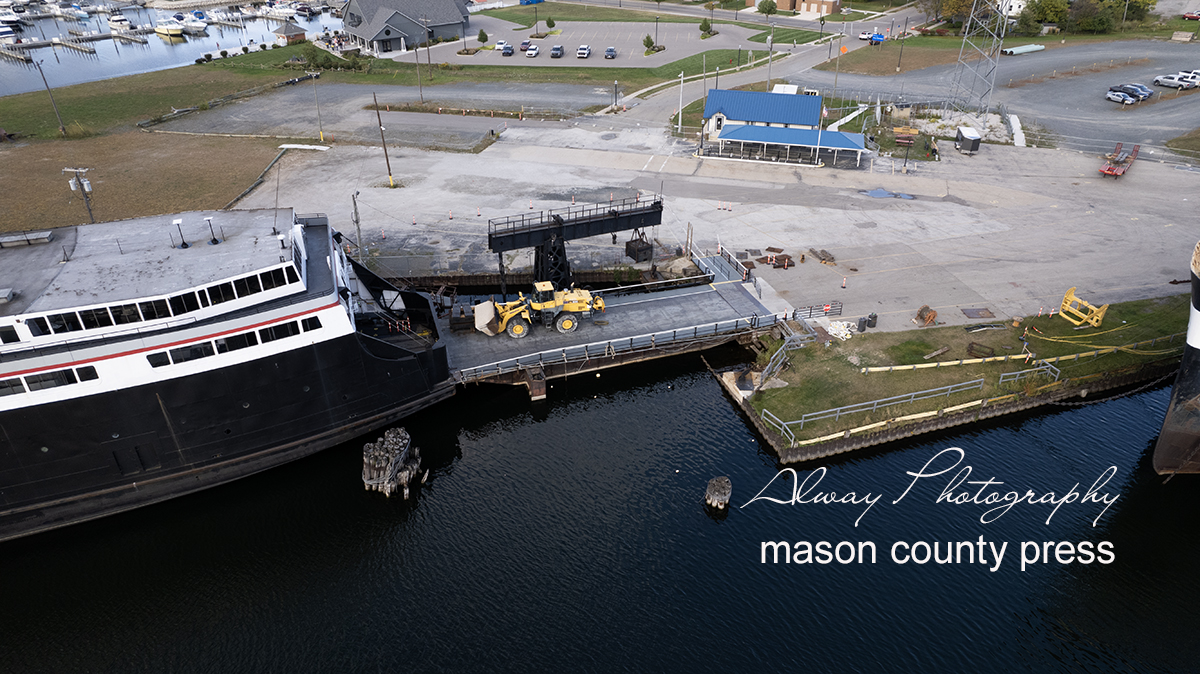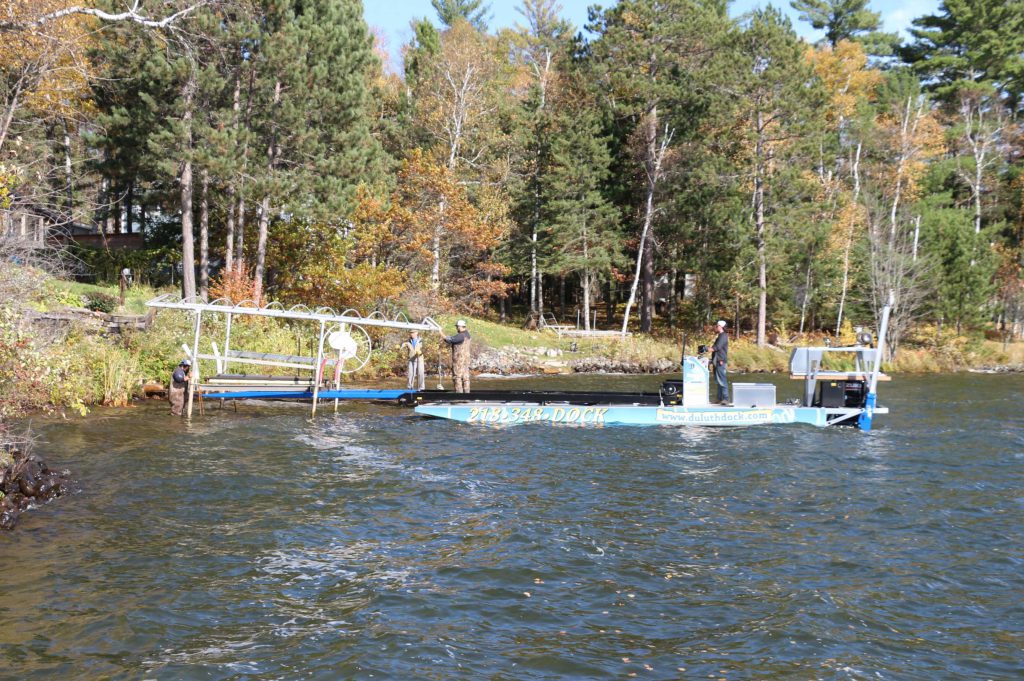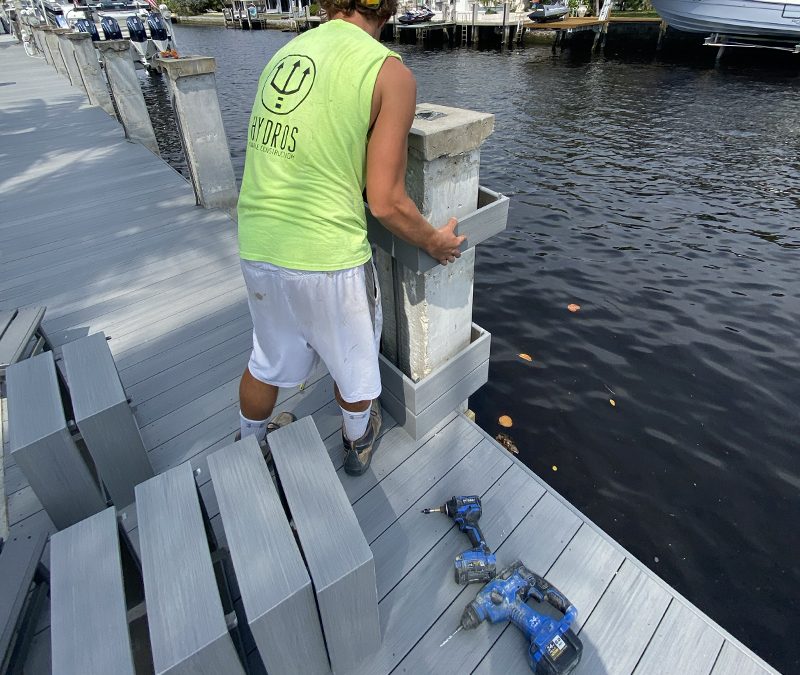How to Address Common Dock Repair Issues for Safe Water Tasks

Identifying Common Dock Issues
Recognizing typical dock issues is essential for maintaining the functionality and safety of your beachfront home. Routine evaluations can assist uncover problems before they end up being severe, guaranteeing both the longevity of the dock and the safety and security of those that utilize it.
One more typical problem is the destruction of flotation protection tools. These devices are necessary for maintaining the dock resilient, and any kind of damage or slits can trigger the dock to list or sink. Frequently inspecting for leakages or waterlogged floats can preempt much more substantial problems.
Furthermore, algae and barnacle buildup on the dock's surface can develop harmful and slippery problems. This biofouling not only postures a danger to users yet can additionally accelerate the deterioration of the dock materials.
Finally, checking for indicators of corrosion on metal elements is vital. Rust can jeopardize the stability of the dock's framework, making it risky. By regularly recognizing these typical dock problems, you can make sure that your dock stays practical and safe for years ahead.
Fixing Rotting Timber
When attending to the concern of deteriorating wood on your dock, it is crucial to act promptly to stop more deterioration. Begin by completely checking the whole structure to identify all affected locations. Use a screwdriver to probe the wood; if it sinks in quickly, the wood is likely decayed and needs instant focus.
Once identified, remove the decayed sections utilizing a saw or sculpt. Make sure to reduce back to healthy, solid wood, ensuring you eliminate all compromised product. After elimination, treat the continuing to be wood with a timber chemical to stop future rot. This therapy will certainly help protect against dampness, which is the key source of timber degeneration.
Next, change the gotten rid of areas with marine-grade lumber or pressure-treated timber, which are much more immune to water damages. Safeguard the brand-new items with galvanized or stainless-steel bolts to avoid deterioration. Furthermore, applying a waterproof sealant to the brand-new wood can offer an additional layer of security.
Safeguarding Loose Boards
How do you guarantee your dock remains practical and secure for all its customers? One critical element is securing loosened boards, which can or else posture considerable threats. Loose boards not only raise the risk of tripping however can additionally compromise the structural honesty of the entire dock.

For reinstallation, make use of galvanized or stainless steel screws, as these products supply premium resistance to corrosion in marine environments. Make certain the screws are long enough to permeate deep into the underlying support framework, however not so long that they extend with the dock's surface. Pre-drilling pilot openings can aid stop the wood from splitting.
Lastly, keep a normal examination routine to home determine and deal with any kind of brand-new issues promptly. By securing loose boards successfully, you contribute to the overall security and durability of your dock, making it a trusted platform for water tasks.
Supporting Unstable Pilings
Ensuring the stability of unsteady pilings is paramount to preserving a secure and functional dock. Unstable pilings can compromise the whole framework, positioning significant threats to customers and possibly causing pricey fixings. The very first step in maintaining these crucial components is an extensive assessment. Take a look at the pilings for indications of rot, damages, or changing. Use a level to look for vertical positioning and guarantee they are driven deep enough right into the substratum to give ample support.
If the pilings are located to be unsteady, one reliable technique for support is making use of additional bracing. Cross-bracing with dealt with lumber or galvanized metal can dramatically enhance stability. Anchor the braces securely to both the pilings and the dock structure to disperse lots equally.

Routine upkeep and periodic reassessment of the pilings' security are important to making sure long-lasting dock safety and security and performance.
Replacing Rusty Equipment
Dealing with unstable pilings is simply one aspect of keeping a dock's stability; another essential worry is replacing corroded equipment. Gradually, exposure to moisture and salt can lead to the oxidation and deterioration of screws, bolts, and braces, jeopardizing the whole framework's safety and security. Routine evaluation for corrosion is vital, particularly after serious weather or seasonal modifications.
When rusty equipment is recognized, immediate action is required. Begin by selecting marine-grade stainless steel or galvanized equipment, both developed to withstand the severe aquatic setting. Guarantee that you have the proper devices, such as wrenches and screwdrivers, to securely remove the old, corroded pieces without creating additional damages to the dock.
After getting rid of the rustic hardware, extensively tidy the affected areas to eliminate any recurring corrosion or particles. Apply a rust-inhibiting primer to revealed metal surfaces before mounting the brand-new equipment. Tighten up all components securely to stop future helping to loosen, and regularly inspect the installations to make certain continuous security.
Changing corroded hardware not just extends the dock's life-span yet likewise substantially enhances the security of water activities. By proactively taking care of rust, you protect both the framework and its customers, ensuring a pleasurable and protected waterside experience.
Verdict
Normal inspections and maintenance are important to deal with common dock repair work issues and make certain safe water tasks. By identifying and fixing troubles such as deteriorating wood, loosened boards, unsteady pilings, and rusty equipment, structural stability and long life can be dramatically boosted. The application of appropriate therapies and marine-grade products further fortifies the dock versus ecological stress factors. Such aggressive steps add to the general safety and functionality of dock frameworks, promoting a see this website safe and secure environment for water-based tasks.
Making sure the security of water activities hinges dramatically on the proper upkeep and repair work of anchors (Dock Repairs). These devices are crucial for keeping the dock resilient, and any kind of damage or slits can trigger the dock to checklist or sink. By regularly identifying these usual dock problems, you can guarantee that your dock continues to be functional and secure for years to come
Making certain the stability of unsteady pilings is extremely important to visit here maintaining a useful and secure dock.Routine evaluations and upkeep are crucial to address usual dock repair concerns and make certain secure water activities.